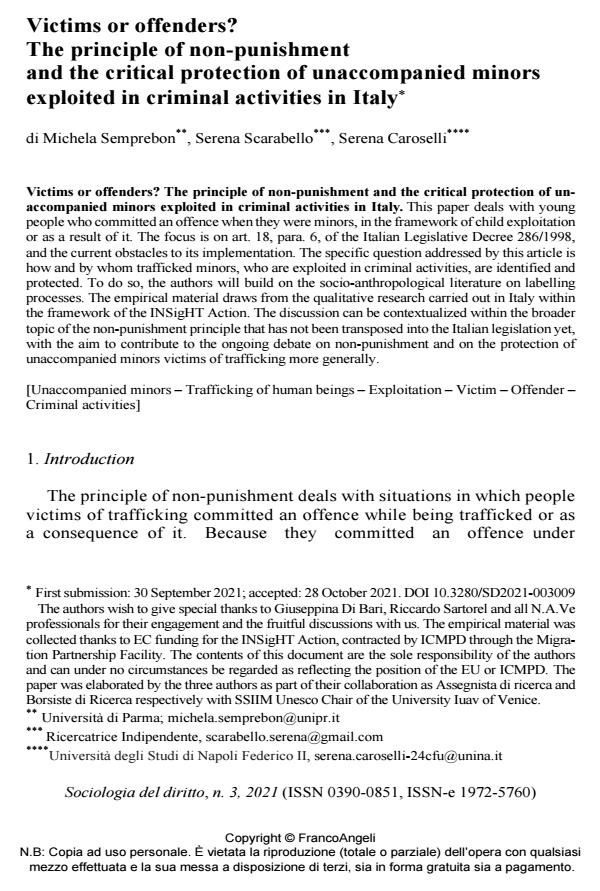Victims or offenders? The principle of non-punishment and the critical protection of unaccompanied minors exploited in criminal activities in Italy
Titolo Rivista SOCIOLOGIA DEL DIRITTO
Autori/Curatori Michela Semprebon, Serena Scarabello, Serena Caroselli
Anno di pubblicazione 2021 Fascicolo 2021/3
Lingua Inglese Numero pagine 29 P. 190-218 Dimensione file 265 KB
DOI 10.3280/SD2021-003009
Il DOI è il codice a barre della proprietà intellettuale: per saperne di più
clicca qui
Qui sotto puoi vedere in anteprima la prima pagina di questo articolo.
Se questo articolo ti interessa, lo puoi acquistare (e scaricare in formato pdf) seguendo le facili indicazioni per acquistare il download credit. Acquista Download Credits per scaricare questo Articolo in formato PDF

FrancoAngeli è membro della Publishers International Linking Association, Inc (PILA)associazione indipendente e non profit per facilitare (attraverso i servizi tecnologici implementati da CrossRef.org) l’accesso degli studiosi ai contenuti digitali nelle pubblicazioni professionali e scientifiche
This paper deals with young people who committed an offence when they were minors, in the framework of child exploitation or as a result of it. The focus is on art. 18, para. 6, of the Ital-ian Legislative Decree 286/1998, and the current obstacles to its implementation. The specific question addressed by this article is how and by whom trafficked minors, who are exploited in criminal activities, are identified and protected. To do so, the authors will build on the socio-anthropological literature on labelling processes. The empirical material draws from the quali-tative research carried out in Italy within the framework of the INSigHT Action. The discus-sion can be contextualized within the broader topic of the non-punishment principle that has not been transposed into the Italian legislation yet, with the aim to contribute to the ongoing debate on non-punishment and on the protection of unaccompanied minors victims of traffick-ing more generally.
Parole chiave:Unaccompanied minors - Trafficking of human beings - Exploitation - Victim - Offender - Criminal activities
Michela Semprebon, Serena Scarabello, Serena Caroselli, Victims or offenders? The principle of non-punishment and the critical protection of unaccompanied minors exploited in criminal activities in Italy in "SOCIOLOGIA DEL DIRITTO " 3/2021, pp 190-218, DOI: 10.3280/SD2021-003009